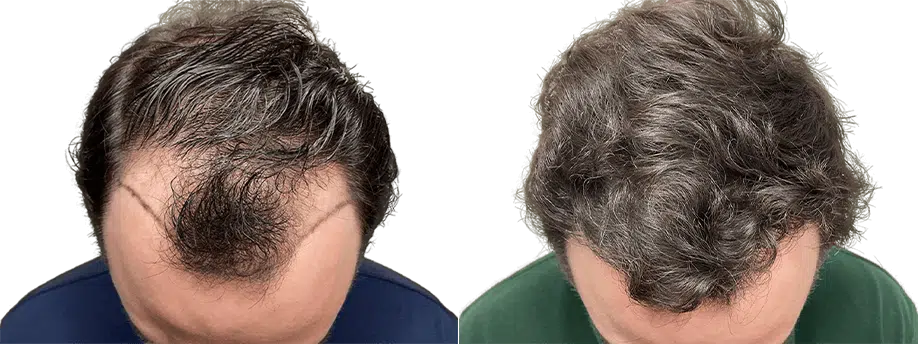The Price for a African-American FUE Hair Transplant is comparable to that of a regular client with straight hair. We do not charge a premium price. Moreover, you can take advantage of third-party 0% Financing.
The procedure will take longer than a conventional FUE Hair Transplant for someone with straight hair. On average, it could take an additional two hours. The reason behind this is to ensure that the hair is not transected during the FUE harvesting process.
FUE Hair Restoration for our African-American clients is performed under local anesthesia. You are wide awake during the procedure but can take a nap, watch TV, or chat with our staff.
When it comes to African American (AA) textured hair, it is not a one-size-fits-all. The type of curl, consistency of the hair and density all play a factor in a successful hair transplant. In AA hair, the curl is as much about what is going on under the skin, as it is about what is going on above the skin. Although it may seem like the curl is coming from the hair shaft, which is the visible part of the hair that exits from the epidermis, there is also a curve in the proximal portion of the hair, where the root is, which is found under the skin in the dermis, and this makes it challenging when trying to harvest a follicle without damaging it.
AA hair can be broken up into two different types of curls, which we identify in the hair transplant world as the "J" curl or the "C" curl. A "J" curl is when the portion of hair under the epidermis looks like the bottom portion of the "J" and the top portion that exits the skin looks more like the top portion of the "J". Those clients who have a "J" curl will be more forgiving during the harvesting, as the clinician does not have to veer too much with the angles when trying to harvest. In contrast, the "C" curl is the more challenging of the two. With the "C" curl, both the portions above and below the dermis are curved, making it very difficult to rely on exit hair angles. Those with a "C" curl pose a greater challenge to the clinician, because only those clinicians who are using superior harvesting techniques and who have knowledge about how to harvest this type of curl, will execute a successful procedure. Thus, many African-American patients wind up with less than desirable results under a less experienced clinician/doctor or using the wrong technology and technique.
Many FUE instruments being used in harvesting today are not designed for curly or coarse hair and do not result in successful hair transplantation.
You will be given detailed pre-op instructions which would include abstaining from alcohol a few days prior to your procedure. The doctor/clinician will also review your medications and may discuss them with your primary care provider. Please be sure to list all medications, allergies, vitamins, health conditions, prior procedures/surgeries, and other intakes on your medical history form before your consultation. You will also be given instructions on how to cut your hair prior to your procedure.
























